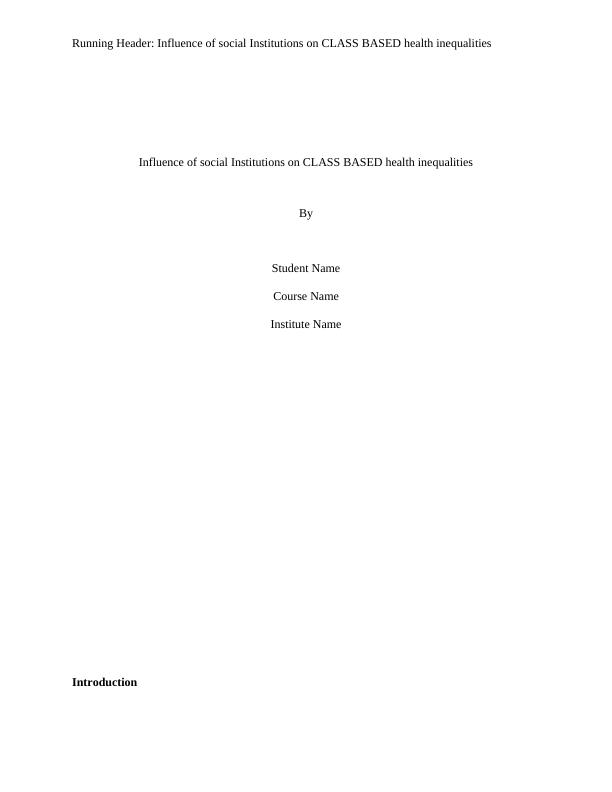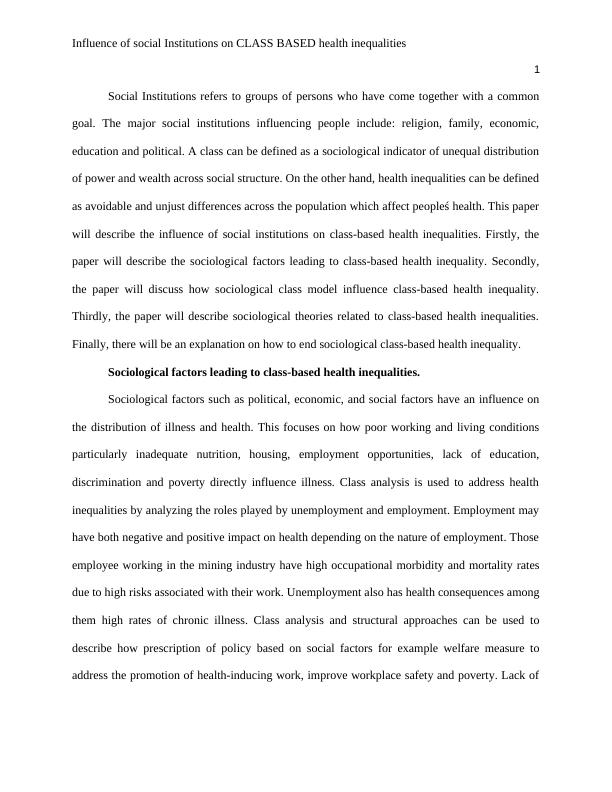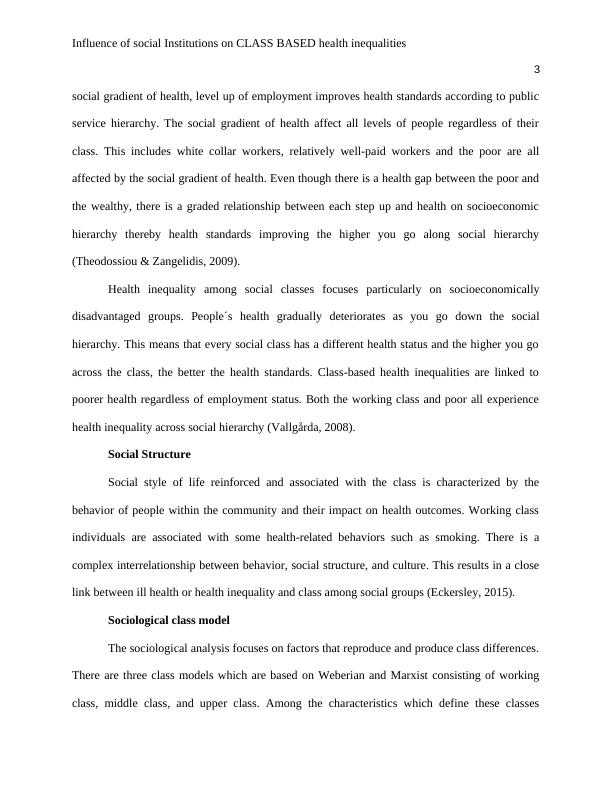Influence of social Institutions on CLASS BASED health inequalities
11 Pages2674 Words254 Views
Added on 2023-06-04
About This Document
This paper describes the influence of social institutions on class-based health inequalities. It discusses sociological factors leading to class-based health inequality, how sociological class model influence class-based health inequality, sociological theories related to class-based health inequalities, and how to end sociological class-based health inequality.
Influence of social Institutions on CLASS BASED health inequalities
Added on 2023-06-04
ShareRelated Documents
End of preview
Want to access all the pages? Upload your documents or become a member.
WEL203A: Chronic Illness and Disability
|9
|2250
|110
Sociology of Health: Inequalities, Theories, and Role of State and Professionals
|8
|1970
|85
Theories of Health Sociology Assignment
|9
|2364
|143
Introduction to Sociology Research 2022
|6
|1407
|20
Gap between Aboriginal and Non-Aboriginal People in Australia | Report
|4
|913
|25
Health and Social Care Organisation of UK : Case Study
|12
|3788
|47




